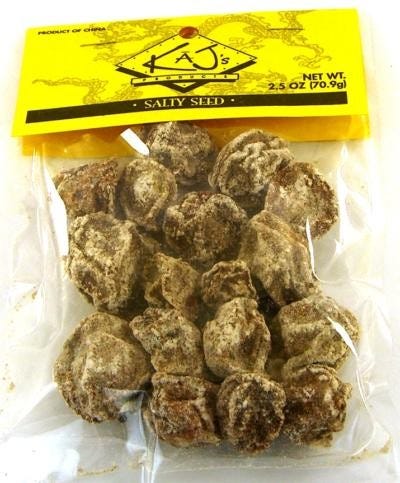Get This Report about I Luv Candi
Get This Report about I Luv Candi
Blog Article
Indicators on I Luv Candi You Need To Know
Table of Contents10 Easy Facts About I Luv Candi ExplainedThe Best Guide To I Luv CandiI Luv Candi Can Be Fun For AnyoneThe Best Guide To I Luv CandiThe Definitive Guide for I Luv Candi
You can also approximate your own profits by using various presumptions with our monetary strategy for a sweet store. Average month-to-month profits: $2,000 This type of sweet store is often a small, family-run business, perhaps recognized to locals yet not drawing in great deals of tourists or passersby. The store might offer an option of common candies and a few homemade deals with.
The store does not generally bring uncommon or pricey items, focusing instead on cost effective deals with in order to keep normal sales. Thinking a typical spending of $5 per consumer and around 400 clients each month, the regular monthly earnings for this candy store would be about. Typical regular monthly income: $20,000 This candy store benefits from its critical area in a hectic urban location, attracting a a great deal of consumers searching for pleasant indulgences as they go shopping.

In enhancement to its diverse sweet choice, this store could likewise sell relevant products like present baskets, candy bouquets, and novelty products, giving multiple profits streams. The shop's area requires a higher budget for rental fee and staffing but leads to greater sales volume. With an approximated average spending of $10 per client and regarding 2,000 customers each month, this store could generate.
The Buzz on I Luv Candi
Located in a major city and visitor destination, it's a large facility, often spread out over numerous floors and perhaps part of a national or worldwide chain. The shop provides an immense variety of sweets, consisting of unique and limited-edition products, and goods like branded apparel and devices. It's not simply a shop; it's a location.
The functional costs for this kind of store are significant due to the place, size, personnel, and includes provided. Thinking a typical purchase of $20 per client and around 2,500 clients per month, this flagship shop can accomplish.
Classification Examples of Expenditures Typical Month-to-month Expense (Variety in $) Tips to Decrease Expenses Rental Fee and Utilities Store rent, electrical power, water, gas $1,500 - $3,500 Think about a smaller area, discuss lease, and use energy-efficient lights and home appliances. Inventory Sweet, snacks, packaging products $2,000 - $5,000 Optimize inventory monitoring to minimize waste and track popular things to prevent overstocking.
A Biased View of I Luv Candi
Advertising And Marketing Printed products, on-line advertisements, promotions $500 - $1,500 Emphasis on cost-effective digital advertising and marketing and utilize social networks systems completely free promo. Insurance Service responsibility insurance $100 - $300 Search for affordable insurance rates and think about packing plans. Tools and Upkeep Sales register, display racks, fixings $200 - $600 Buy previously owned devices when possible and carry out routine upkeep to prolong equipment life-span.

This indicates that the sweet store has gotten to a point where it covers all its dealt with costs and starts producing income, we call it the breakeven point. Consider an example of a candy store where the monthly set expenses commonly total up to about $10,000. A harsh quote for the breakeven point of a sweet-shop, would after that be about (given that it's the complete fixed cost to cover), or offering in between with a cost series of $2 to $3.33 each.
What Does I Luv Candi Do?
A big, well-located sweet store address would undoubtedly have a higher breakeven factor than a tiny store that does not require much revenue to cover their costs. Interested about the productivity of your candy store?
One more danger is competitors from other candy shops or bigger retailers who could use a bigger variety of products at reduced rates (https://www.flickr.com/people/200368981@N06/). Seasonal variations sought after, like a decrease in sales after vacations, can also influence success. In addition, altering customer preferences for much healthier snacks or dietary constraints can lower the charm of standard candies
Last but not least, economic downturns that decrease customer costs can affect sweet store sales and productivity, making it important for sweet-shop to manage their expenditures and adapt to transforming market conditions to remain profitable. These hazards are often consisted of in the SWOT evaluation for a sweet shop. Gross margins and internet margins are crucial indicators used to evaluate the productivity of a sweet-shop business.
Everything about I Luv Candi
Essentially, it's the profit continuing to be after deducting costs straight associated to the candy stock, such as purchase prices from vendors, production prices (if the candies are homemade), and team incomes for those associated with production or sales. https://ouo.press/Rhao4w. Net margin, conversely, consider all the expenses the sweet store sustains, consisting of indirect costs like administrative expenditures, advertising, rent, and tax obligations
Candy stores usually have a typical gross margin.For circumstances, if your candy shop gains $15,000 per month, your gross profit would certainly be roughly 60% x $15,000 = $9,000. Think about a sweet store that sold 1,000 sweet bars, with each bar valued at $2, making the total profits $2,000.
Report this page